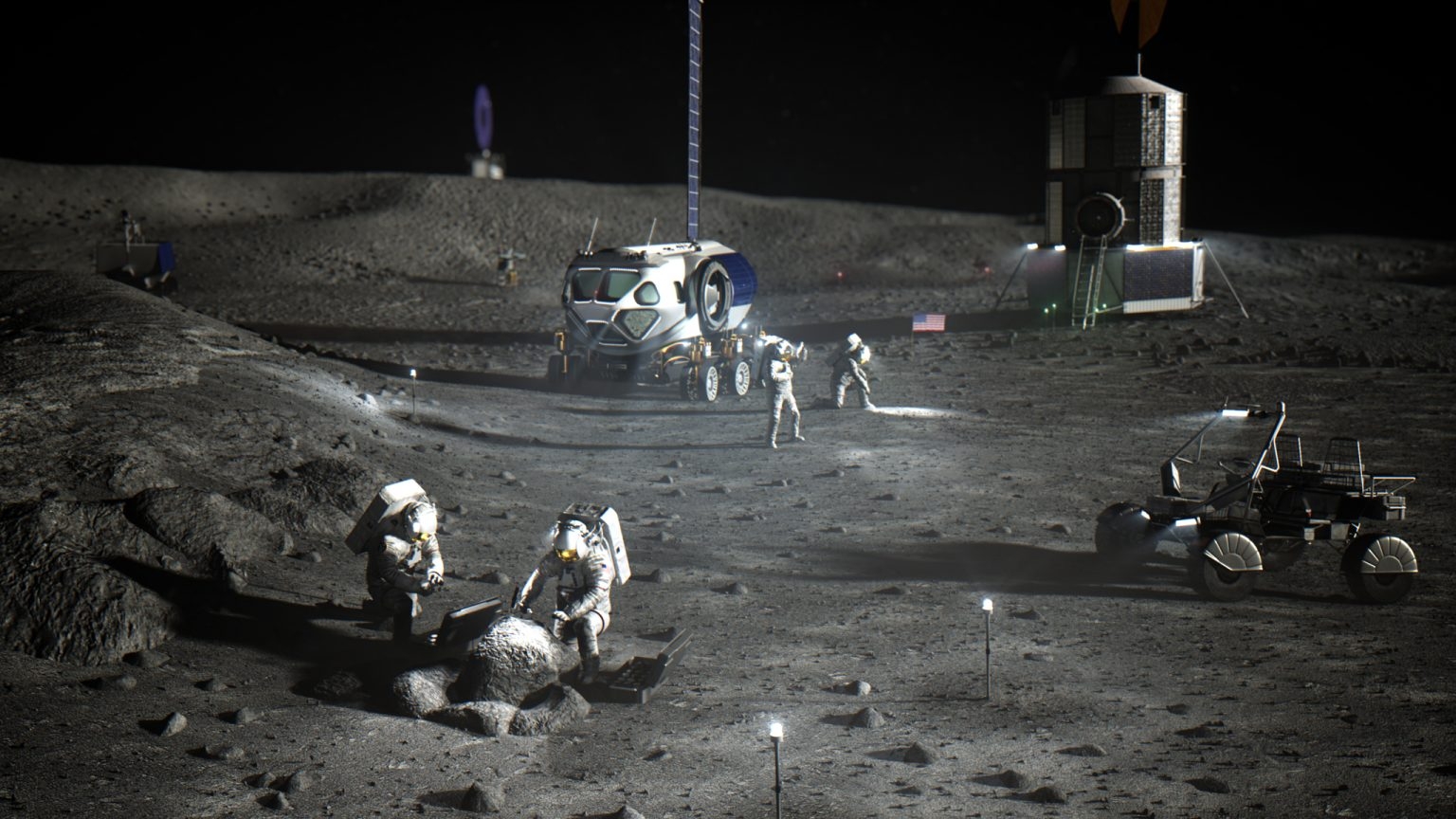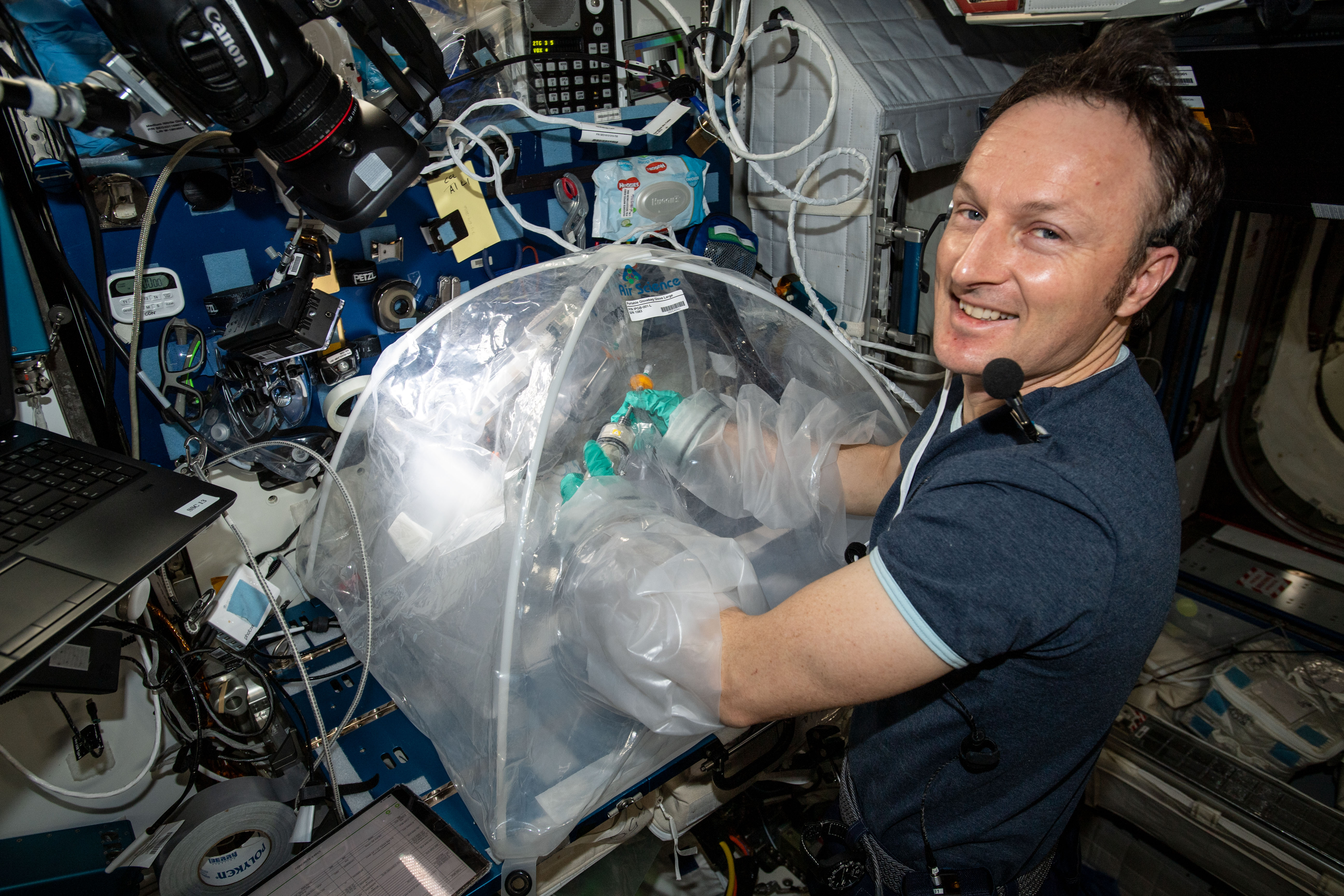
While astronauts aren't back on the moon yet, they're already getting ready for construction.
An International Space Station experiment aims to mix and match ingredients for moon construction, as NASA aims to land astronauts there as soon as 2026 under its Artemis program.
The astronaut landing mission Artemis 3, and its immediate successors, will use temporary base, but the goal of NASA's Artemis Accords is to build a permanent base. But making new buildings on the moon is complicated, which is why astronauts are testing cement-mixing techniques on the ISS before flying there.
"NASA and its international partners are studying ways to make it economical to construct satellites in space, as well as build crew habitats on the moon," agency officials wrote in a statement Monday (Aug. 12).
Related: NASA may build more than one moon base for Artemis missions
To reduce the cost of sending materials to the moon from Earth, one option could be "using the microgravity environment to mix lunar soil with other materials to make cement and build habitable structures on the moon," the statement added.
NASA astronaut Matthew Dominick tested this idea, mixing simulated lunar soil and "other materials" and a "liquid solution" (the ingredients were not specified in the release). The mixture was placed in two bags, and a third bag with hot water was placed in between them.

Dominick put all three bags inside a thermos, just for overnight. The mixture will then settle at the ambient temperature of the ISS until they are shipped home on a future SpaceX Dragon cargo spacecraft, NASA wrote.
The experiment is part of the Material Science on the Solidification of Concrete (Concrete Hardening) investigation, which is using different combinations of cement, water, sand, simulated lunar soil and "other additives", an experiment description states.
The goal is not only to build sustainable structures on the moon, but to find viable alternatives to cement — upon which concrete is based on Earth. Cement requires a lot of energy and raw material and can also release carbon dioxide in the manufacturing process, the experiment makers added. Complications can also arise during mixing, such as air pores, bubbles and brittleness. The experiment aims to smooth out these issues by testing out lunar construction on the ISS.



!["[T]he First and Fifth Amendments Require ICE to Provide Information About the Whereabouts of a Detained Person"](https://images.inkl.com/s3/publisher/cover/212/reason-cover.png?w=600)



